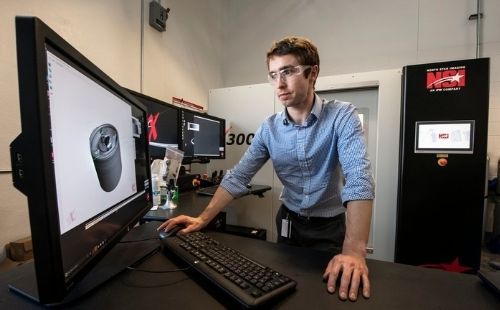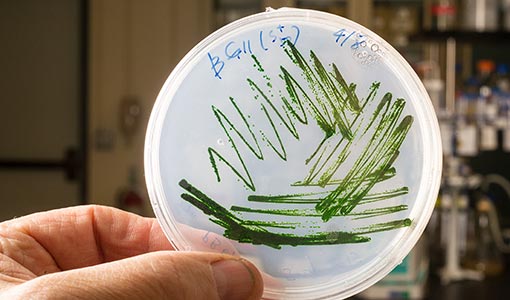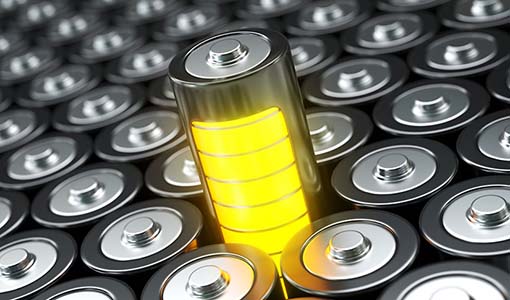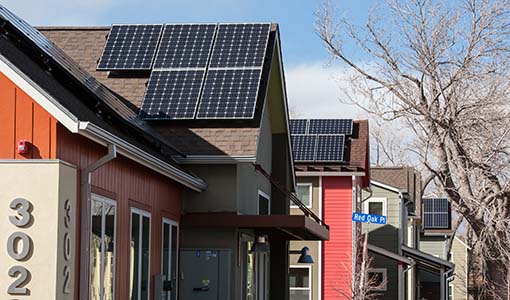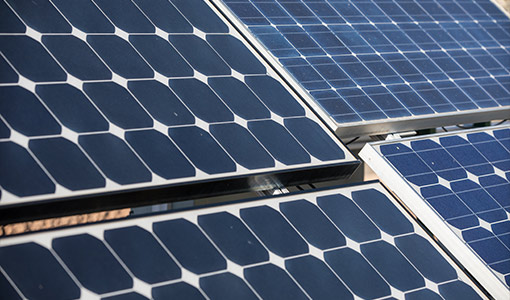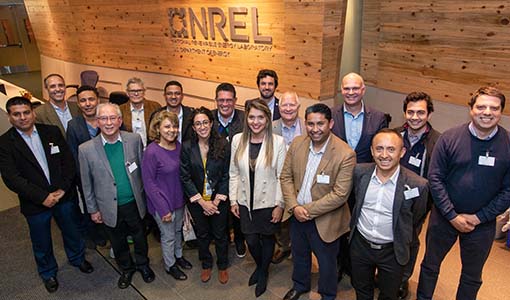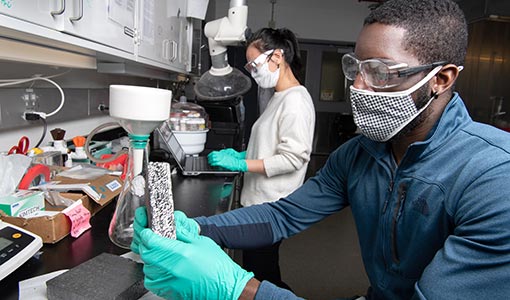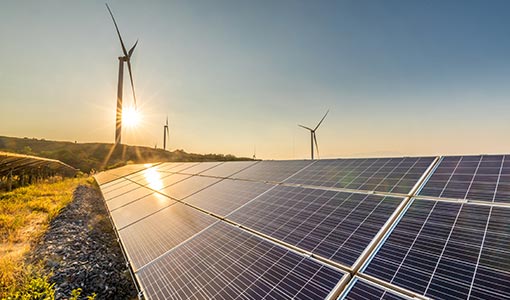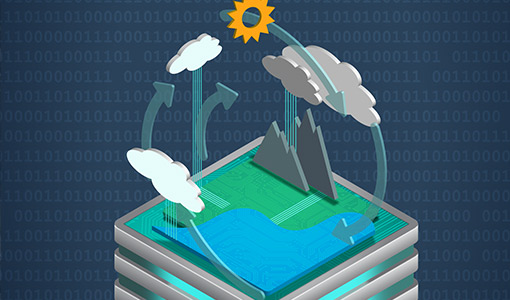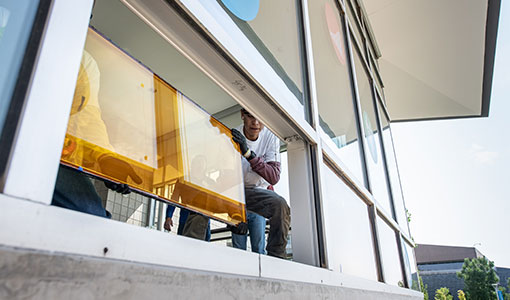December 2021
Building Better Batteries: Architecture for Energy Storage
A recent breakthrough by NREL and the University of Ulm advances the way researchers measure and analyze battery materials using an artificially generated representative architecture of a Li-ion electrode particle in sub-particle grain detail.
News Release: Researchers Publish First Comprehensive Building Stock Characterization Study for the United States
A new report and online dashboard by NREL is the first comprehensive characterization and segmentation of the U.S. building stock, providing a national typology of buildings.
In a Circular Economy, Hard Drives Could Have Multiple Lives in the Future
U.S. data storage technologies, like hard-disk drives (HDDs), contain imported rare-Earth elements in their magnets. As the demand for data storage increases, the supply of critical materials will become more limited.
College Students Team Up To Design Real-Life Geothermal Concepts
Join the NREL-administered Geothermal Collegiate Competition to win $50,000 in cash prizes this spring.
Forget Sci-Fi—This NREL Biotechnology Could Actually Help Colonize Mars
NREL scientists are working on harnessing cyanobacteria to convert growing concentrations of CO₂ in Earth's atmosphere into the same chemicals currently made from petroleum and natural gas—a step toward decarbonizing the chemical industry. With partner Nzyme2HC, they are exploring whether astronauts can use NREL's patented ethylene-emitting cyanobacteria to manufacture building materials and produce oxygen on Mars.
New Projects Move Thermophotovoltaic Technology Closer to Commercialization
Throughout the past three years, NREL has partnered with Antora Energy and MIT to engage in two separate projects in thermophotovoltaic (TPV) technology that have both led to record efficiencies of more than 35%--a very competitive level of performance.
Sharing Data in Virtual Hubs Streamlines Energy Materials Research, Spurs Collaboration
A paper co-authored by NREL researchers and others studies the success of the Energy Materials Network Data Hub—a secure, customizable scientific data sharing platform.
Machine Learning Method Could Speed the Search for New Battery Materials
To discover materials for better batteries, researchers must wade through a vast field of candidates. New research demonstrates a machine learning technique that could more quickly surface ones with the most desirable properties.
SolarAPP+ Speeds Solar Installs for 2,000 Homes (and Counting)
NREL’s solar permitting tool “busts through bureaucracy” to fast-track residential solar projects and expands into energy storage permitting.
Extreme Weather, Rapid Innovation, and Rock-Bottom Prices: NREL Researchers Offer Guidance for Solar Systems To Last
Scientists at the National Renewable Energy Laboratory have laid out a cost-effective five-point plan to improve the reliability of solar panels in light of extreme weather, rapid innovation, and extremely competitive prices.
Riccardo Bracho Advises Energy Transitions in Countries Worldwide, Including His Native Mexico
After two decades working in finance, NREL analyst Riccardo Bracho pivoted to an energy career. Today he leads analysis of international power sector transformations.
Data-Informed Analysis Reveals Energy Impacts of Shared Micromobility
Driven by the growing popularity of shared micromobility—which typically involves the use of electric bicycles and scooters as well as regular bicycles—a research team from NREL is exploring the energy impacts of such travel modes versus the conventional modes they may replace.
NREL Launches New Lab-Embedded Entrepreneurship Program, West Gate
Every day, game-changing technologies are introduced that could more easily transition the world to a clean energy future. However, few entrepreneurs have the resources to develop promising new technologies into successful cleantech startups.
NREL Acquires Next-Generation High-Performance Computing System
Kestrel will take flight and bring the U.S. closer to a clean energy future.
November 2021
Navigating Our Ever-Changing Electric Sector: The 2021 Standard Scenarios Outlook Is Here
The National Renewable Energy Laboratory's 2021 Standard Scenarios Outlook is now available. The Standard Scenarios are a suite of annually released future scenarios for U.S. power sector evolution through 2050.
Q&A With Alberta ("Birdie") Carpenter: How To Untangle Carbon From the Vast Web of Manufacturing and Supply Chains
In the first Q&A profile in a new series, Manufacturing Masterminds, Birdie Carpenter shares how she is working to reduce industrial energy use, carbon emissions, plastic waste, and more.
Scientists Discover Way To Improve Perovskite Efficiency and Stability
Researchers at NREL and affiliated institutions across the country have bolstered the efficiency of perovskite solar cells by as much as 16%.
NREL Provides Guidelines for Creating Next-Generation Data Ecosystem
Scientists at NREL are helping pave the way for the next generation of data-driven, AI-enabled material science. In a new journal article, the authors describe a decade-long effort to build a modern data ecosystem to support close interaction between computational sciences and materials sciences.
Path to Net-Zero Emissions Runs Through U.S. Buildings
Commercial buildings generate 16% of all U.S. carbon dioxide emissions.
Eight NREL Scientists Named to List of Highly Cited Researchers
Eight researchers affiliated with NREL are on this year's list of Highly Cited Researchers, with many familiar names from the 2020 list. Clarivate PLC, the London-based company that released the list on Nov. 16, selected 6,602 researchers around the world based on the number of highly cited papers they produced between January 2010 and December 2020.
Last Updated May 28, 2025

